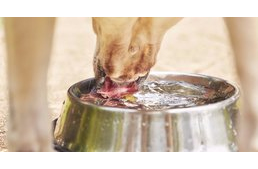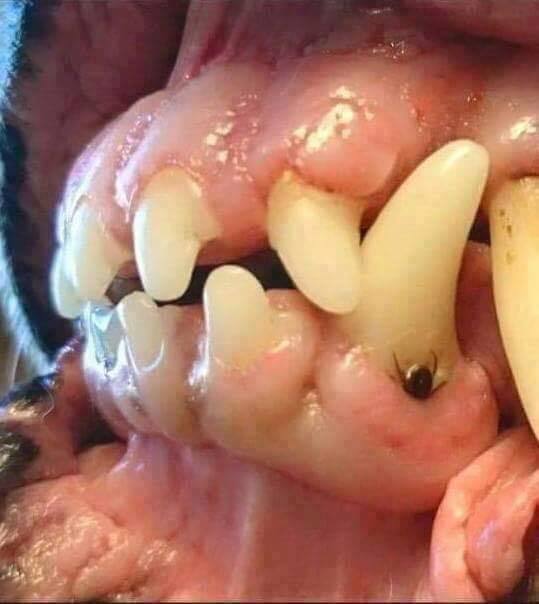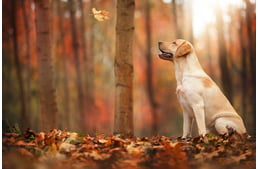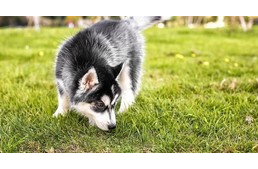 News - Coverstory
News - Coverstory
Tick danger: examine carefully these 6 points on your dog’s body
12:00 - 14 March 2019
Author: M.Lilla
Category: Health
Tickborne diseases can be extremely dangerous for our pets and us, owners, too. Always examine your dog’s body thoroughly after a walk, paying extra attention to these body parts.
1. Ears
Ticks choose their favourite hunting sites based on their well-tried paths. They wait patiently for the future hosts on the tip of grasses or branches of shorter bushes. And as our dogs have a very curious nature, they tend to dig their noses and heads into everything that draws their attention. This gives a huge advantage to the sneaky little parazites to climb onto their victims. The ears are richly encompassed with blood arteries and veins, making it the perfect place for ticks to feed. They can hide among the folds, crevices and long fur – if your dog shakes its head or scratches the ears anxiously, check them for ticks or other possible health problems.

Photo Credit: Pinterest
2. Under the collar
Ticks can easily hide under or around the collar, bandana, harness and even the dog’s clothing. While attaching to the textile parts of these equipments, they can get really close to the dog’s skin. If we prefer to leave the collar/harness on our dog, it is advisable to remove them together with all the other equipment when it comes to a tick-check. Use a special tick brush or a thick flea comb to comb the dog’s fur. Check carefully the collar – you might notice a tick marching round-and-round on it, waiting patiently to get back onto its four-legged victim-to-be.

Photo Credit: 3milliondogs.com
3. Around the eyes and eyelids
Tiny lumps and bumps can form over time as our dogs get older. A tick attached to a dog’s eyelid can easily be mistaken with these alterations. If we are not sure to distinguish a tick from a lump, it is best to visit the vet. Removing a tick from around the eye usually requires some practice along with a steady hand. In case our dog finds it difficult to stay calm or he gets frightened easily, always seek professional help in order to avoid any possible damage to the eyes.

Photo Credit: lifewitdogs.tv
4. Mouth
Some dogs enjoy grazing from the fresh green grass. Unfortunately, this activity can soon become another threat to our furbaby’s life. Ticks could climb into a dog’s mouth from a single blade of grass: the tiny parazites can attach to the tongue or muzzle and then reach the inside of the mouth when a dog licks its lips. Ticks latched to the dog’s gums, particularly, in between the teeth can be really difficult to spot. Examining your dog’s mouth on a regular basis can also help you notice any problem that might require vet treatment.

Photo Credit: dogrescuecarcassonne.co.uk
5. Paws and pads
Ticks can also hide among the digital pads so it’s good to check the dog’s paws after being out and about. If your dog has longer fur, you may trim the ’fluffy slippers’ around the paws and thus give less option for ticks to attach to the dog’s hair. If not noticed in time, ticks can climb up on the dog’s limbs and reach other parts of its body, where they are even more difficult to spot. When your dog is constantly licking or chewing one of his paws or the area among the digital pads, it can be a sign of an unwanted visitor or a foxtail. This latter can wander through your dog’s paw or slowly shin up inside its leg causing immense pain, inflammation and infection.

Photo Credit: apetsplaceofclw.com
6. Bottom and tail
Ticks love dark and moist places, covered in thick coat, where dogs can’t reach them. Examine thoroughly the area around and under your dog’s tail, including the rectum and the genitals, no matter how uncomfortable it may seem. Check the testicles, as well, if you have a male dog. Some dogs are more prone to matted fur, especially on the inner side of the thighs, take this into account, too.
Direct contact to a damaged tick can be infectious for us, so it’s strongly advised to use a special tick removal tool (a hook or a loop). Do not attempt to tear out a tick with hands as its infected saliva can easily reach your blood circulation through the tiniest wound on your hands. Tickborne diseases, like Lyme Disease or Babesia mean a huge threat to both the pet and its owner, so always keep an eye out on prevention: put a tick collar or spot-on on your dog, use spray on your body when you go hiking, and don’t forget to keep your garden clean. Read our tips for a tick-free garden here.
Index image source: lifewithdogs.tv/Pinterest
If you liked this article and would like to be informed about latest news
we ask give a like our Facebook page!
 Autumn is here and so are some difficulties for dog owners
Autumn is here and so are some difficulties for dog owners
Every season has its own particularities, things we need to pay more attention to given the circumstances. Summer brings the danger of heat strokes and sunburns, while our dogs have to cope with frost and salt on the streets in wintertime.
 Coronavirus – Tips for Dog Owners
Coronavirus – Tips for Dog Owners
The WHO has declared the coronavirus outbreak pandemic, so we have to try our best to prevent its spreading. Here are some essential tips to stay safe, along with your beloved pets.
 Why should you let your dog sniff around during walks?
Why should you let your dog sniff around during walks?
It is widely-known that most dogs enjoy going for walks - and they easily get carried away by the millions of smells they encounter while sniffing around. Why is it so important for them?
 How much water do dogs need daily?
How much water do dogs need daily?
Does my dog drink enough water? How do I know, what amount is enough for him? These questions usually come up during the hot summer days, but it’s good to know the answer at any time of the year.
 5 tips for a tick-free garden
5 tips for a tick-free garden
Thanks to the mild winters, the number of ticks have increased lately – and thus the danger they mean to us and our pets. With the help of our tips, you can easily create a less tick-friendly environment in your garden.










